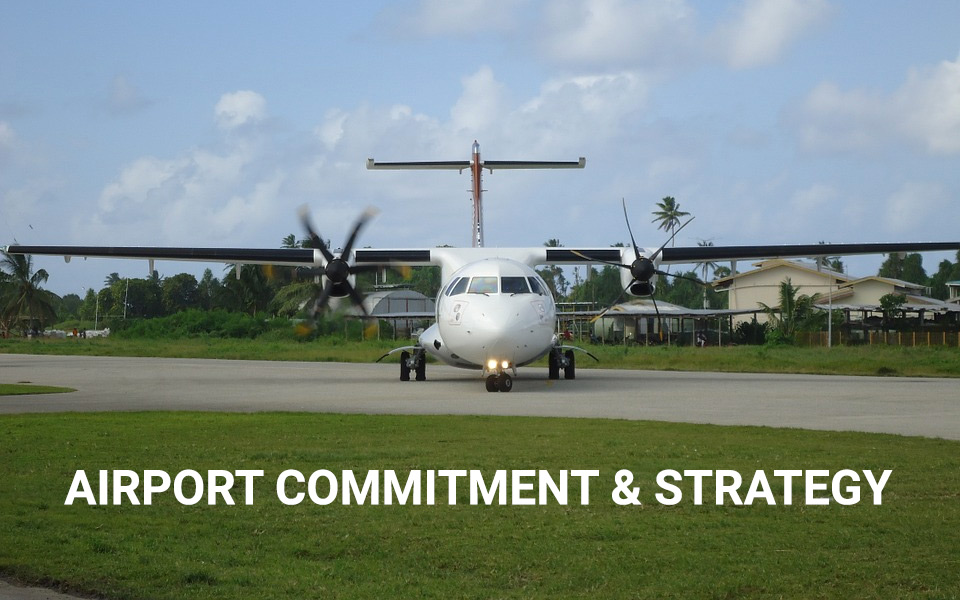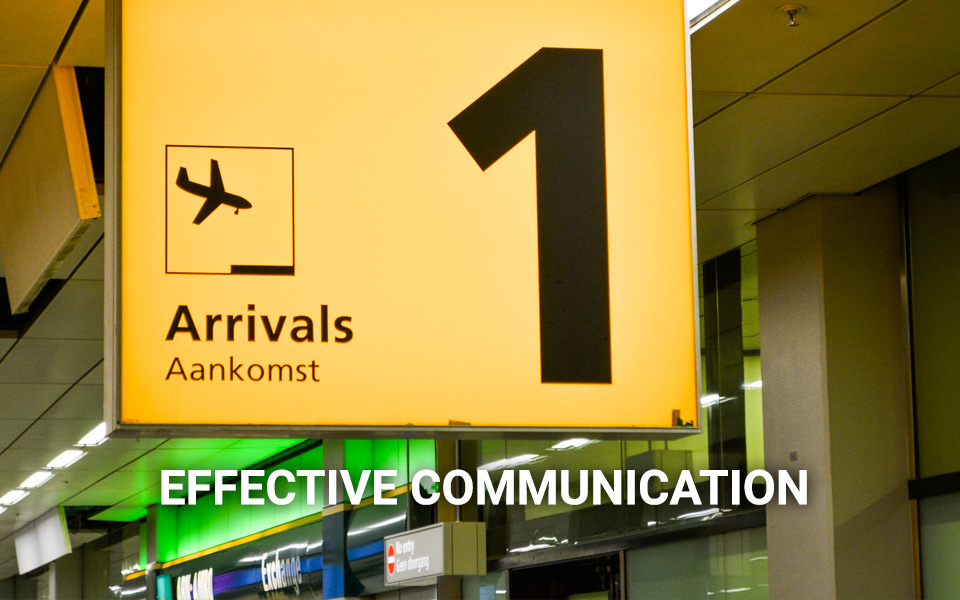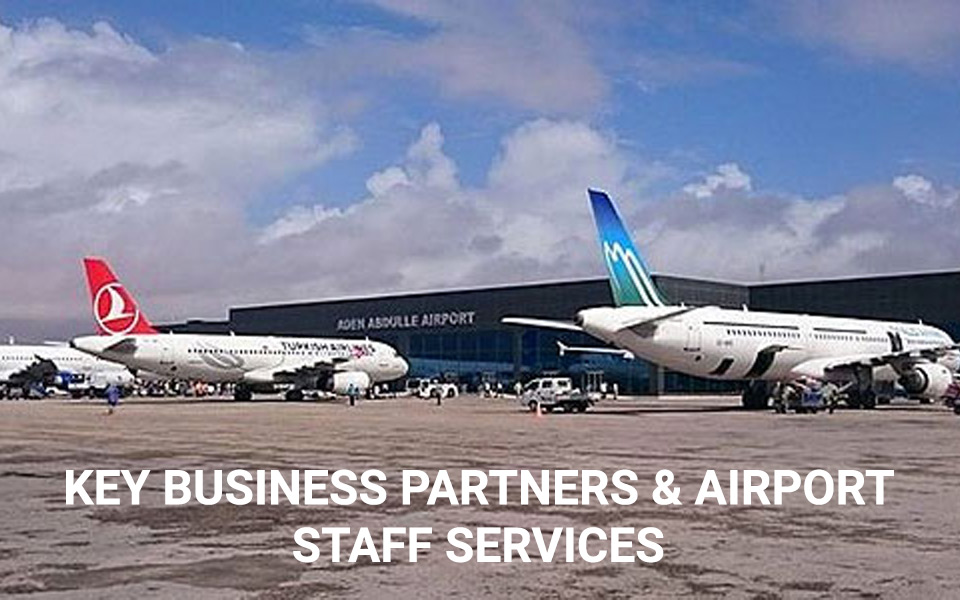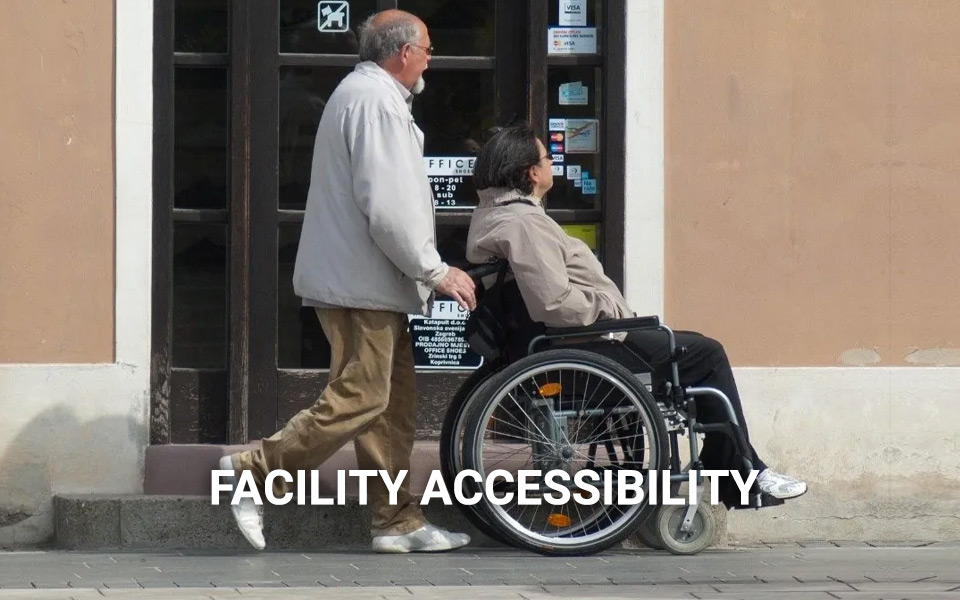A Companion WebResource to ACRP Research Report 239:
Assessing Airport Programs for Travelers with Disabilities and Older Adults
Key Business Partners and Airport Staff Services
Key business partners’ services include the services and staff support provided by airlines, third-party providers and other suppliers. These services are among the most basic services provided at airports and, as a result, are valued by all travelers.
Support staff services, which are an important component of key business partners’ services, provide the “human”/customer interface that is essential to provide peace of mind to customers who require additional assistance.
As a result, the importance of these services to the traveler grows proportionately greater when basic services fall short of the customer’s expectations. For travelers with disabilities and older adults, who are often most dependent on these services for basic support, seamless communication and continual collaboration between the airport, airlines, third-party providers and other suppliers are even more essential to deliver a seamless customer experience.
1. Assistive Services and Airport-Wide Assistive Programs
Assistive services, such as wheelchairs, escort services, and the airport staff that support these services, are utilized most frequently by travelers with disabilities and older adults requiring extra assistance. In addition to assistive services, airports also provide airport-wide assistive programs that are focused on enhancing the travel experience for travelers requiring specialized assistance throughout the airport journey. Monitoring and evaluating these services and programs are critical to adequately determine the customer satisfaction of these two important and growing traveler groups. Notable practices listed below provide guidelines on ensuring assistive services/programs are inclusive and accessible to travelers with all types of disabilities and older adults requiring extra assistance, and not just those with reduced mobility.
1.1 Differentiating assistive services for travelers with different types of disabilities
- Train airport staff, business partner staff and volunteers on how to identify and address the differing needs of travelers with varying disabilities requiring extra assistance. Accessibility training can be standalone or incorporated into existing training programs.
- Train staff on how to properly handle devices such as personal wheelchairs, walking canes, etc.
- Purchase wheelchairs in a variety of types and sizes that travelers may borrow; hire a contractor to manage their maintenance and relocation where needed; and advertise their availability online and on signage at the airport.
- Require disability awareness training for service providers, with an emphasis on providing appropriate assistance to people in need of wheelchair assistance versus a walking escort.
1.2 Provide assistive services between point of arrival (parking, rental car, transportation mode, curbside, etc.) and the terminal entrance
- Provide convenient means of requesting timely assistance at point of arrival (and at point of departure).
- Provide a free, accessible mode of transport (e.g., accessible shuttle, electric cart, or wheelchair service) between terminals and between remote areas (such as parking garage and rental car lot) and the terminal.
- Make provision for the airport to manage service to cover gaps themselves. For example, San Francisco International Airport covers the cost of the service between the rental car facility and check-in for departing passengers, and between baggage claim and the consolidated rental car facility for arriving passengers. Portland International Airport requires airlines to cover service provision between arrival points and the terminal. Under new Canadian accessible transportation for persons with disabilities regulations, Vancouver International Airport provides advance reservations for curbside service, which can be arranged by calling or emailing their customer call center and specifying the arrival time and location.
- Use services such as Travelers Aid and enlist airport volunteers to provide/supplement assistance to travelers with disabilities and older adults.
- Ensure that airports, airlines and third-party providers collaborate regarding the best way to share information about travelers requesting assistance. This may include providing the appropriate contact phone numbers on the airport website to request assistance upon arrival at the airport.
1.3 Making waiting times at various points of the journey predictable
- Train assistants to let travelers know how long they can expect to wait when left unattended and how to request assistance if they require it.
- Provide a contact phone number with voice and text messaging capabilities for travelers who are unable to move about independently and need to request immediate assistance.
- Provide a customer-facing app, similar to those used by transportation network companies, that shows the expected arrival time of the assigned assistant and offers a means to communicate as needed.
- Provide self-service/autonomous wheelchairs or scooters in airports to offer more flexibility and independence for travelers.
- Set key performance indicators in conjunction with airlines and their service companies, and require them to regularly provide data to assess their performance.
1.4 Other assistive programs
- Service animal programs have been developed to help service animals prepare for air travel. Service dog training companies have arrangements with airports for orientation visits as part of the individual training that service dogs go through.
- Therapy animal programs are helpful in reducing levels of anxiety among travelers.
- Hidden disabilities lanyard programs provide a lanyard (typically sunflower patterned for ease of recognition) to any traveler upon request as a means to self-identify as having a disability and to help airport personnel identify travelers who may need additional assistance. This minimizes the need for travelers to approach staff and disclose that they have a disability.
2. Other Third-Party Services
Other third-party services such as concessions, amenities, educational/museum opportunities, and airport celebratory/customer appreciation events need to be accessible to travelers who use wheelchairs or have hearing or visual disabilities. For people with disabilities and older adults, the challenges caused by facility and digital inaccessibility—combined with limited independence and multiple assistive services gaps—hamper, even preclude, these travelers from enjoying concessions, amenities, educational/museum opportunities, and/or airport celebratory events, to name but a few. For these reasons (and others highlighted in the guide), travelers with disabilities and older adults are less satisfied and contribute less proportionately to the airport’s non-aeronautical revenue potential than do other customers.
Notable practices for other third-party services include:
- Develop detailed design guidelines for concessions and other third-party services to ensure full wheelchair accessibility (paths of travel, seating, tables, counters, etc.).
- Consider the use of virtual assistants and robots to ensure travelers are provided with detailed information to locate third-party services, which static signage may be unable to provide. Virtual assistants can have an interactive component, such as a touchscreen, that can serve as a help desk and provide multiple distinct messages in multiple languages (including sign language).
- Require concessionaires and other third-party services to have large print brochures, flyers, menus and other appropriate collateral material.
- Encourage concessions to have accessible websites, especially online menus for food concessions.
- Ensure accessibility features (VoiceOver/TalkBack, screen magnifier, adjustable font, etc.) are enabled on customer service tablets at restaurants and other third-party services, as appropriate.
- Require concessions to offer staff assistance as well as self-service technology so that customers, including older travelers and those with disabilities, have a choice of how they want to order and pay.
- Explore feasibility of providing gate delivery/pickup services, such as AtYourGate and Servy (Grab), as these also benefit travelers with disabilities of all types.
MINI CASE STUDY: LONDON STANSTED AIRPORT - WHEELLATOR AND BOSTON LOGAN INTERNATIONAL AIRPORT'S VIRTUAL ASSISTANT
Example of key business partner services

Example of technology that can enhance the experience for travelers with disabilities/older adults

At Boston Logan International Airport (BOS), the Virtual Assistant—dressed as a Mass Port customer service agent—delivers TSA security information in English and Spanish to more than 6,000 travelers a day.
The Tensator Virtual Assistant uses imagery and audio messages to relay information and instructions to nearby individuals. Instead of posting a prerecorded video on a display screen, the Tensator puts the video on a flat, standing surface that resembles a human and, as a result, appears to be a person giving directions to anyone in proximity, detected via a sensor in the unit. The effectiveness of messaging is much higher, due in part to the novelty of the device.
The Tensator Virtual Assistant has an interactive touch screen that can serve as a help desk and provide up to 11 distinct messages, including wayfinding directions to users. The assistant is also multilingual, with the capability of using any prerecorded language. Verbally relayed information is easier to understand for travelers with cognitive disabilities and vision loss compared to posted signs with the same information. At BOS, this service speeds the screening process by getting travelers ready and frees up TSA agents to focus on screening. After piloting the Tensator Virtual Assistant in Terminal E, BOS also deployed them in Terminals A, B, and C.
This toolbar provides a key for the assessment tool icons. Click on each icon for more details.



